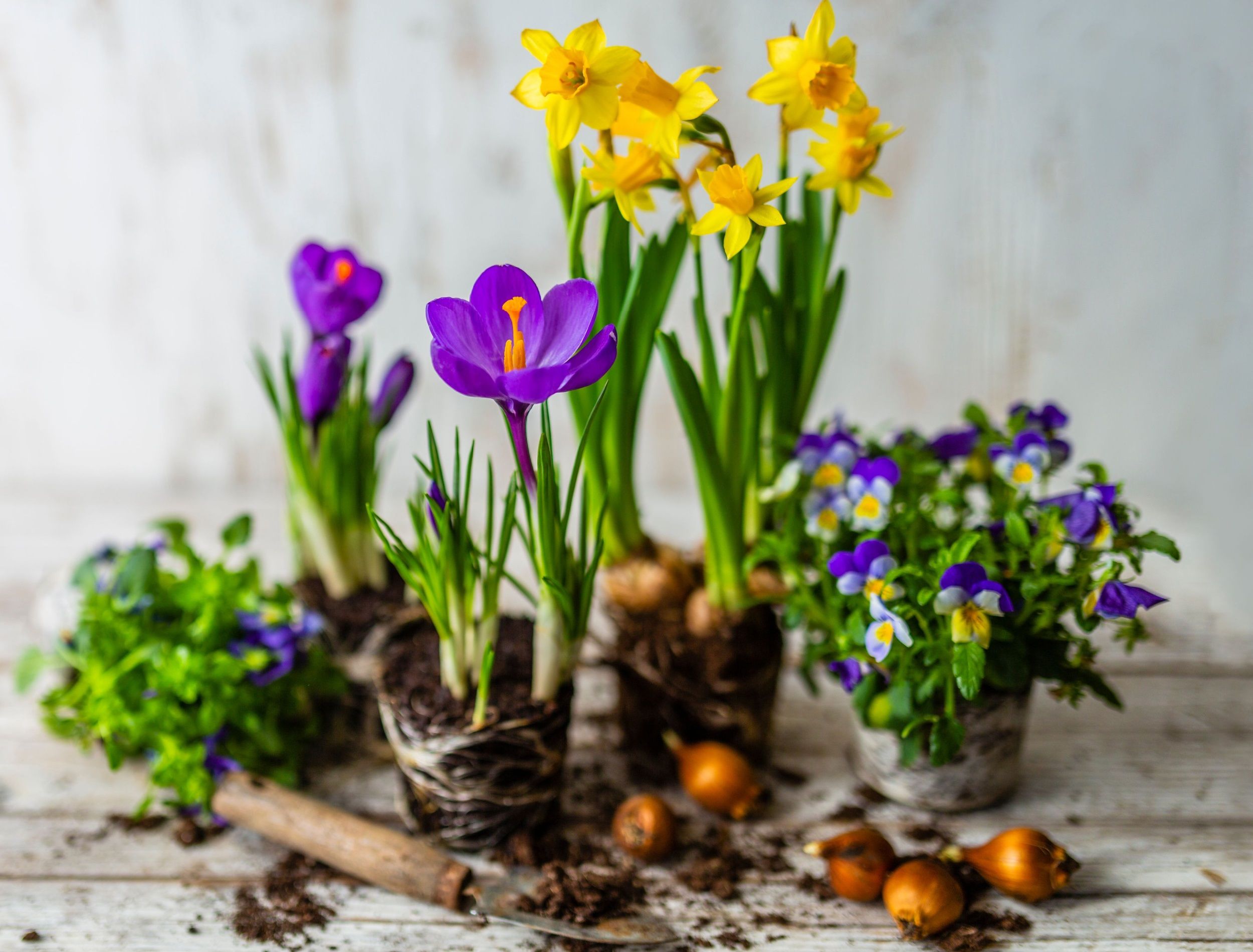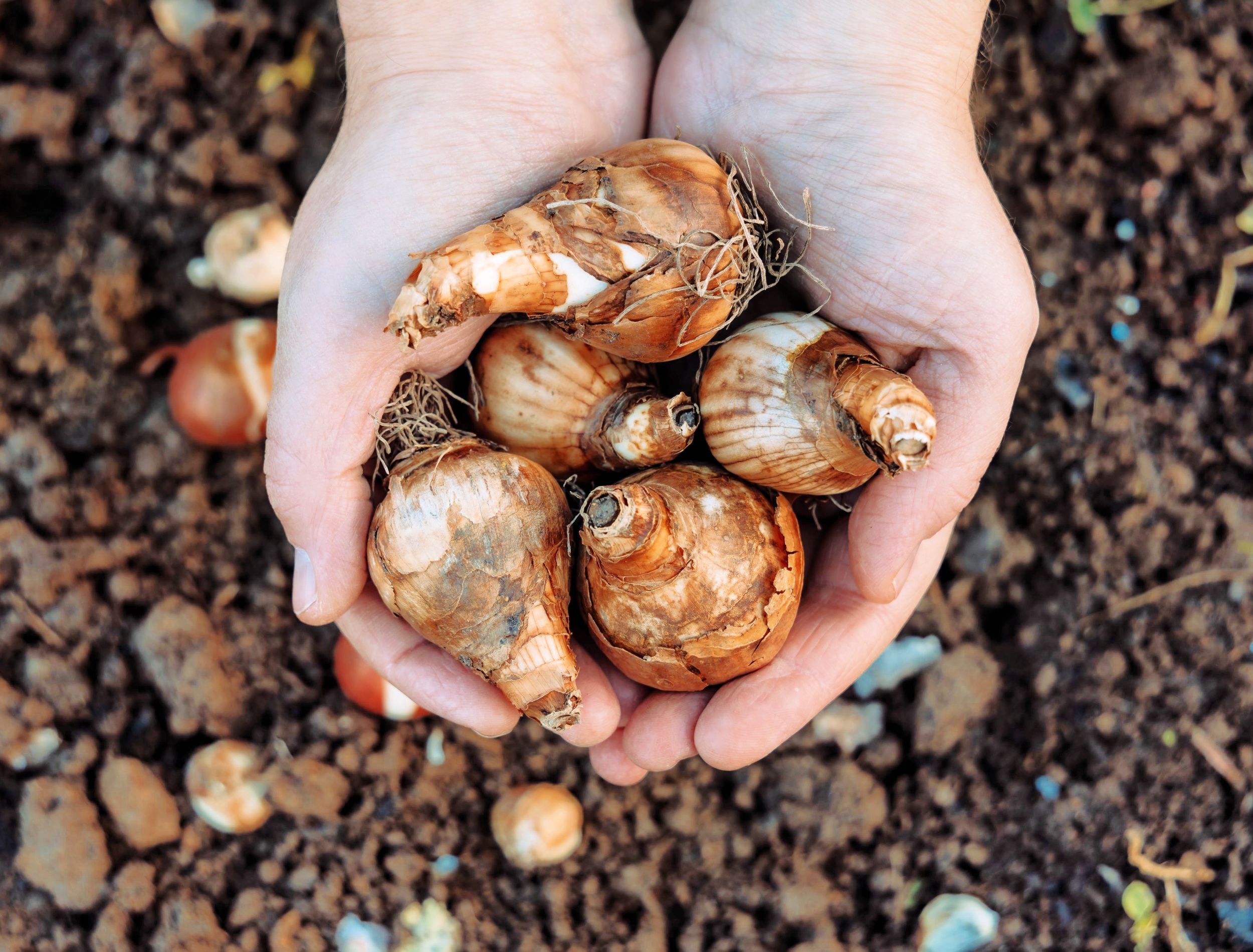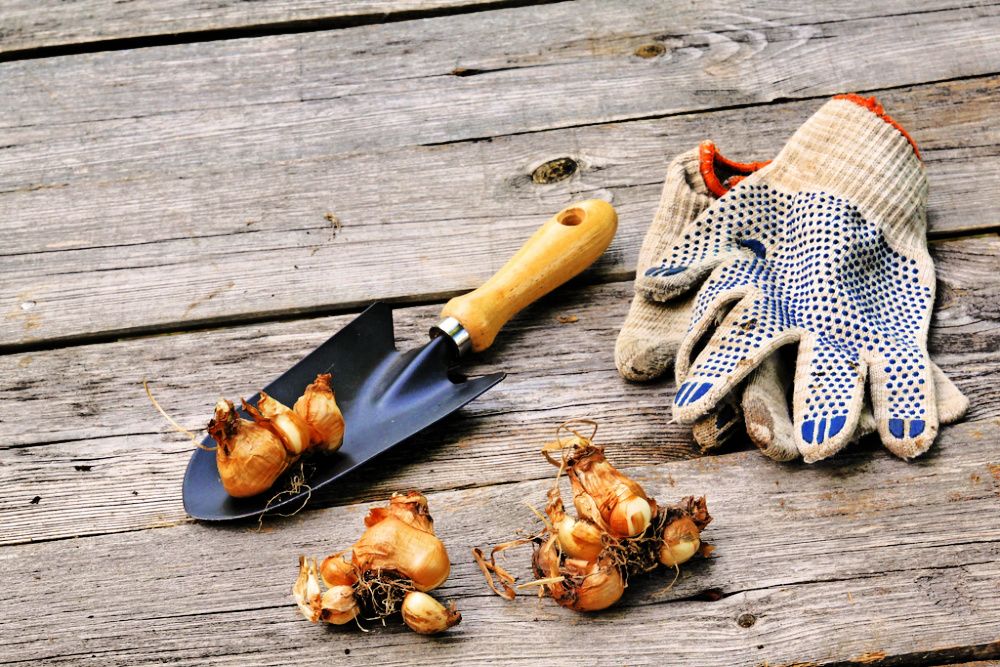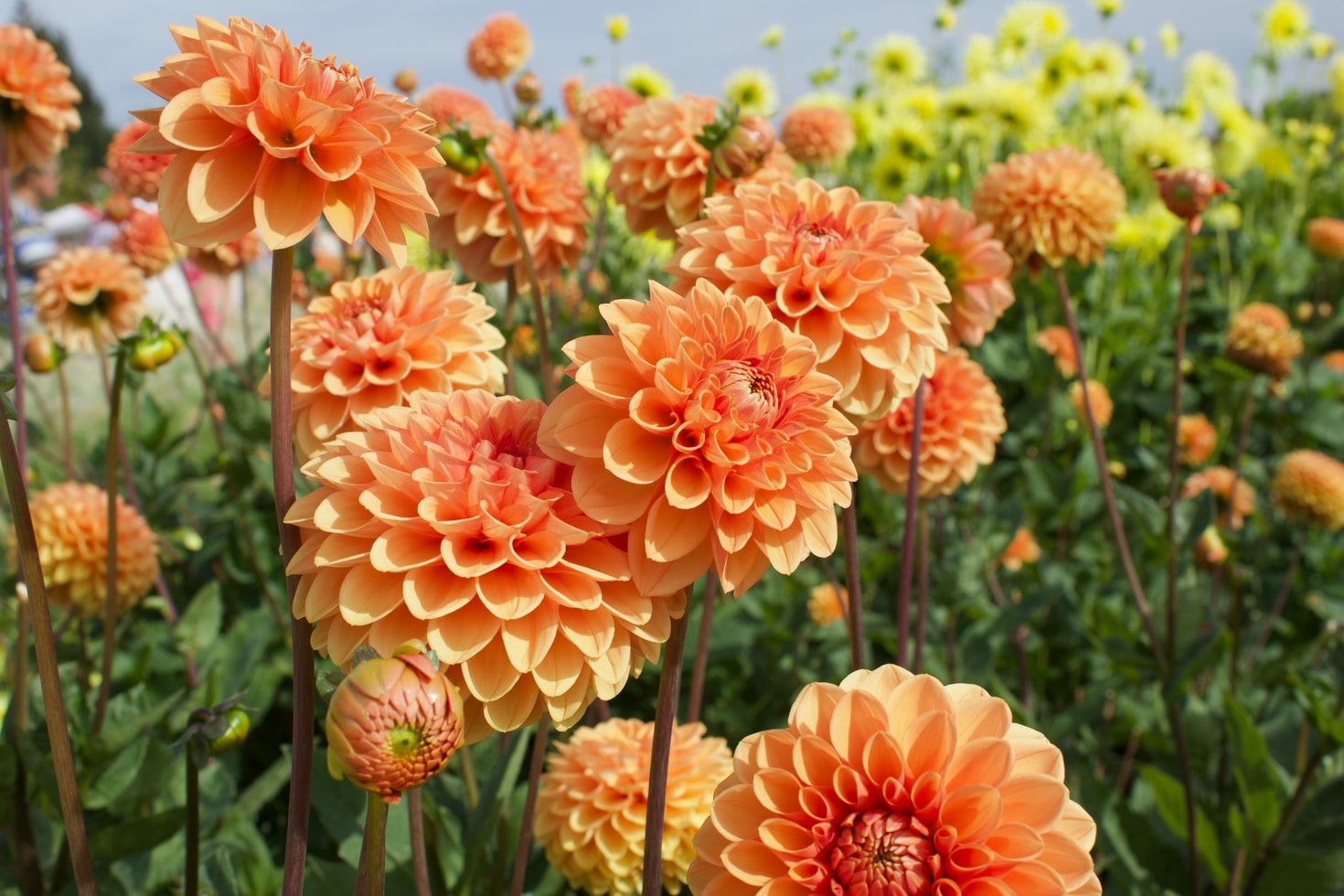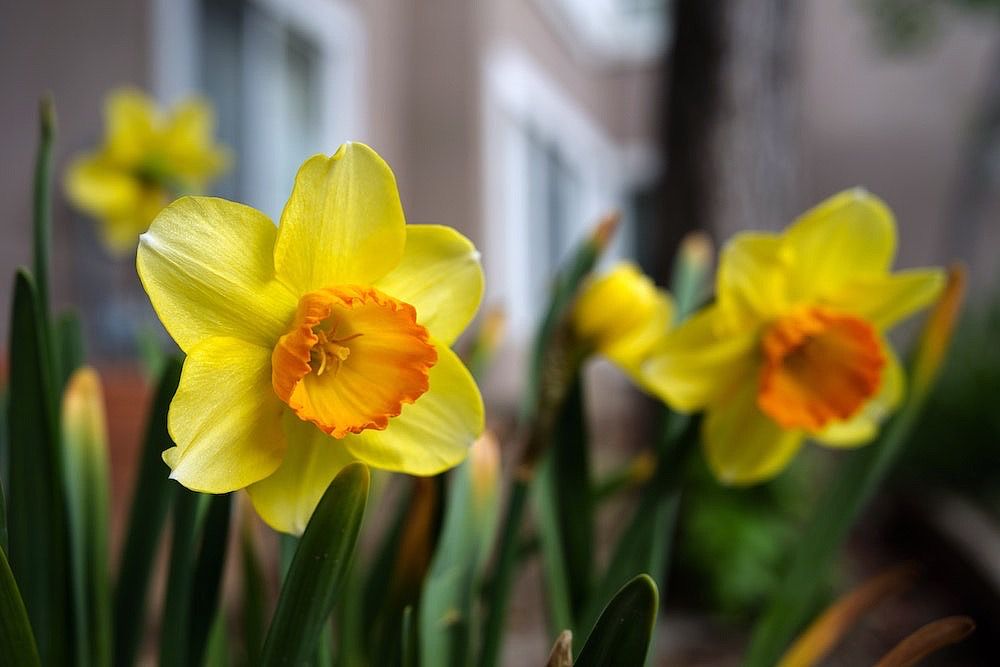As the temperatures start to cool down and the leaves begin to change color, it's time to start thinking about what bulbs to dig up this fall. Planting spring flowering bulbs are a great way to add color and interest to your landscape, but if you don't know what you're doing, you can end up with a lot of dead plants come springtime.
So, what bulbs should you be digging up in your garden this fall? Keep reading to find out!
First, Why Is It Important to Dig Up Bulbs
Image credits: S.O.E via Shutterstock
The leaves are falling, the temperature is dropping, and it's time to start thinking about digging up your bulbs. Many wonder, why is it important to dig up bulbs in the fall? Here are three reasons:
To Prevent Bulb Rot
If you live in an area with a wet climate, your bulbs may be at risk of rot if they're left in the ground over winter. By digging them up and storing them indoors, you can prevent this from happening.
To Replant Them in a Different Location
Maybe you want to change up your garden next year and try planting your bulbs in a new spot. Fall is the perfect time to do this, as you can easily dig them up and replant them without having to worry about disturbing their growth.
To Divide and Replant Overcrowded Bulbs
If your bulbs are starting to crowd each other out, it's a good idea to dig them up and divide them in the fall. This will give them more room to grow next year, and it can also help prevent disease.
Main Types of Bulbs
Image credits: Sarycheva Olesia via Shutterstock
There are five main types of bulbs: true bulbs, corms, tubers, tuberous roots, and rhizomes. True bulbs, like daffodils and tulips, have a papery outer layer that protects the inner layers of scales.
Corms, including crocuses and gladioli, are solid cylinders made up of compressed stem tissue.
Tubers, like caladiums, and oxalis, have fleshy stems with small buds on them.
Tuberous roots, for example dahlias, are thickened, fleshy roots that store food for the plant, and they are typically planted in the spring.
A rhizome is a thickened, horizontal underground stem of some plants that is noted for its ability to send out lateral shoots and roots at intervals along its length. Lily-of-the-Valley grows from rhizomes.
What Bulbs Can You Dig Up This Fall?
Dahlias
Image credits: Timo C. Dinger via Unsplash
Dahlias are one of the most popular flowers for gardens. They come in a wide range of colors and sizes, and they bloom from summer all the way until frost. Here’s what you need to know.
Dig up Dahlia bulbs in the fall, after the leaves have died back, and after the first frost has blacked the plant.
Cut to about 2 to 4 inches of top growth and carefully dig around the plant. Gently lift the plant from the ground, making sure to get as much of the root system as possible. Gently shake off any excess dirt and place the bulb in a ventilated, dry, and cool location until ready to replant.
When storing, it's suggested to add vermiculite to the box you intend to keep your plant in to retain moisture. It's important not to let your Dahlia bulbs freeze so keeping them in a cool, dry environment is best. The ideal storage temperature is between 39-45 degrees Fahrenheit; An unheated basement or garage would work fine. If you live in a warmer climate, you can store them in the refrigerator, just be sure to label each bulb so you know which variety it is!
Dahlias are tuberous plants, meaning they store all their energy in their underground roots. If left in the ground over winter, they are likely to die. By digging them up and storing them properly, you can ensure they will come back next year bigger and better than ever!
Daffodils
Zezen Mutaqin via Pexels
Digging up daffodil bulbs in the fall may seem like a lot of work, but it's actually quite easy! First, simply locate the bulbs that you would like to dig up. Once you have found your selected area, gently dig around them with a shovel or spade. Be careful not to damage the bulbs as you dig.
Next, lift the bulbs out of the ground and place them in a bucket or other container. Once all of the bulbs have been dug up, wash them thoroughly and dry them completely. The drying process should take up to a week.
If you are not able to plant them right away, place the bulbs in onion sacks of pantyhose and store the bulbs in a cool, dry place until you are ready to plant them.
That's all there is to it! With a little bit of effort, you can easily dig up daffodil bulbs in the fall and enjoy their beauty for years to come.
Lilies
Image credits: suesmith2 via Canva
When the weather starts to cool off in the fall, it's time to start thinking about digging up and dividing your lily bulbs. This is a great way to maintain and store them for the winter.
First, dig and gently pull on the plant until it comes out of the ground and divide the bulbs. You may need to use a small shovel or trowel to help loosen it up. Once you have the bulb out, brush off any excess dirt and replant it immediately about 4 to 6 inches deep.
If you can’t replant your lily bulbs right away, put the bulbs in a plastic bag comprising of lightly dampened peat moss and leave the bag in the fridge.
Just Keep Digging!
Now that you know what bulbs to dig up this fall, it's time to get digging! Be sure to share your tips and tricks in the comments below.
And, if you're looking for more information on planting spring flowering bulbs, be sure to check out some other intriguing blog posts. Thanks for reading, and happy gardening!

